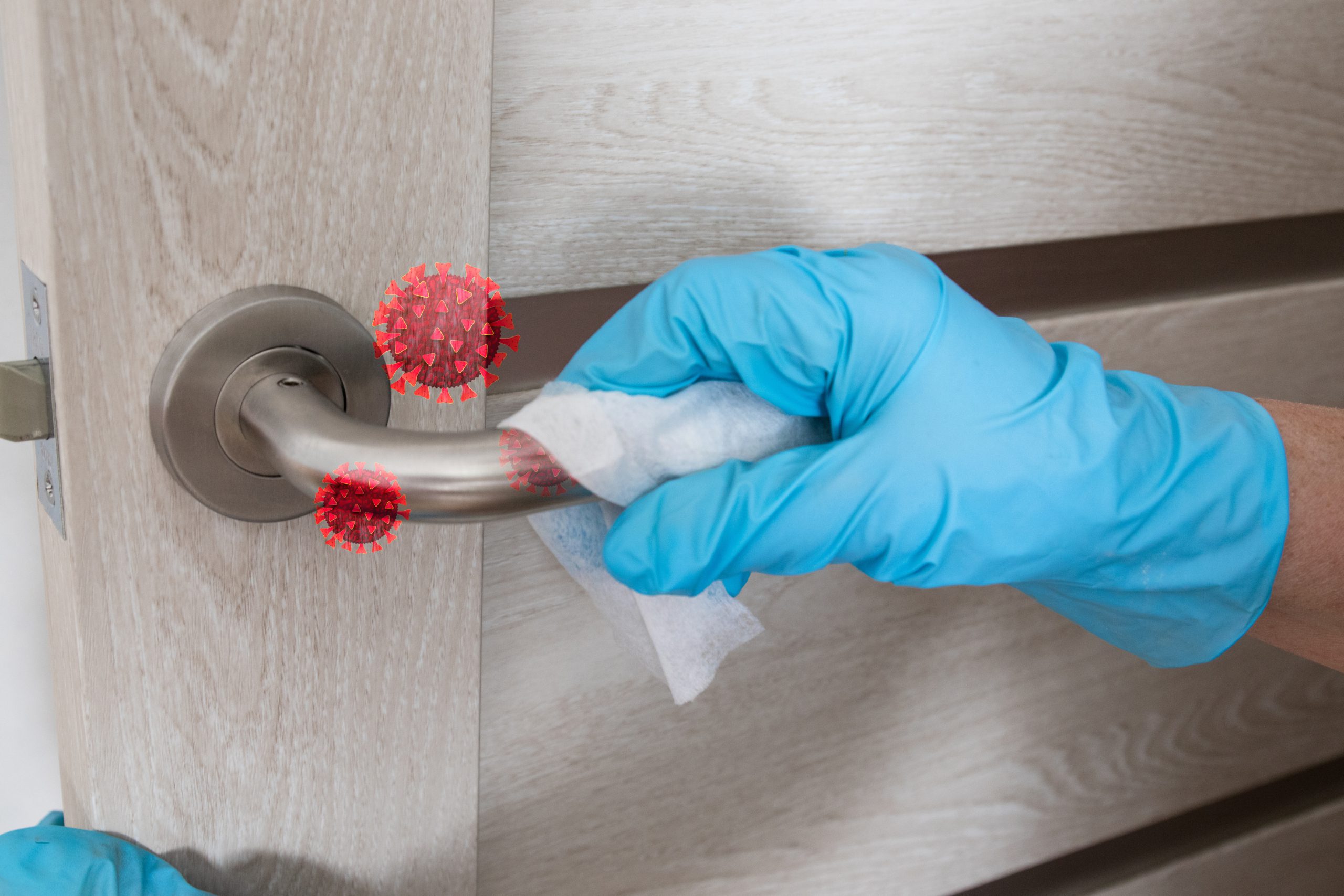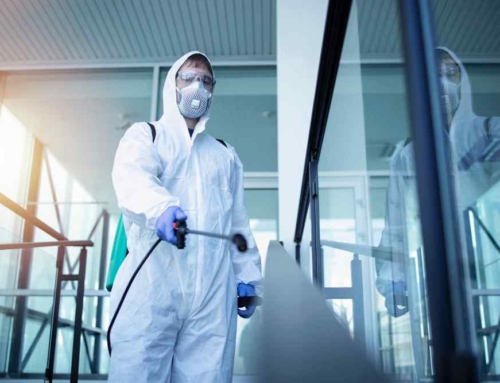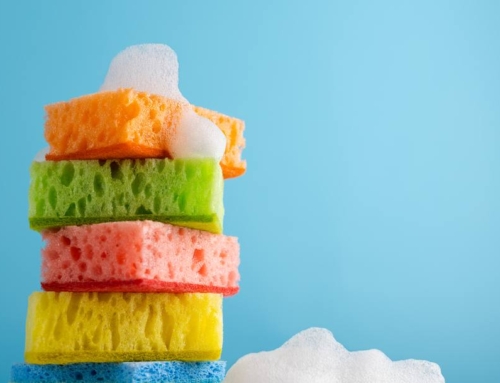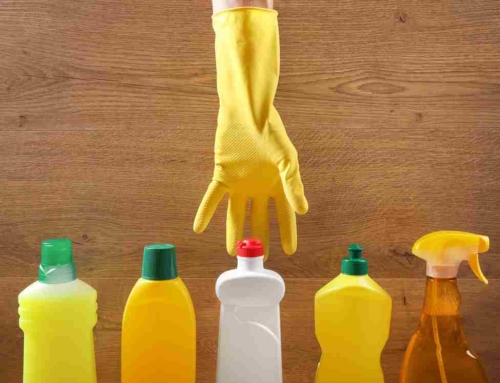Our homes are supposed to be a safe haven, but during the COVID-19 pandemic, it can start to feel like we are surrounded by germs that threaten our family—especially if someone starts to feel under the weather.
We wash our hands all the time and use plenty of hand sanitizer, but how can you disinfect your home to ward off illness?
Germs are everywhere in our homes, but there’s no need to feel overwhelmed. You can combat the coronavirus in your house with precise care and a few simple steps.
Here’s what you need to know about sanitizing your house during the pandemic:
Pick the Right Products, and Read the Label
The EPA has assembled a list of which cleaning products have been known to kill a majority of SARS-CoV-2, the virus that causes COVID-19, so if you haven’t checked to make sure you have the proper products to eliminate the virus, that should be your first step.
The next step is to read the label. If you truly want to sanitize your house, you need to know about cleaning products and the contact time needed to kill illness-causing viruses. Even strong disinfectants that make it on the EPA’s list have to come in contact with the virus for a certain amount of time to kill the virus, and that time should be listed on the label.
The biggest mistake folks make when disinfecting their home is they wipe up the cleaning solution too soon, which limits the disinfecting power of the product. So before you start sanitizing your home, check the label and make sure you adhere to the contact time before drying.
Disinfect High-Touch Surfaces
There are places that we touch in our home without even thinking that they all harbor germs, so you should start sanitizing your home by cleaning these high-touch surfaces with an EPA-approved disinfectant:
- Cupboard and drawer pulls (in the kitchen and the bathrooms)
- Faucets
- Kitchen and bathroom counters
- Toilets (including the handle)
- Refrigerator, dishwasher and microwave handles, panels and buttons/knobs
- Remote controls and game controllers
- Cell phones, tablets, e-readers and other mobile devices
- Keyboard and computer mouse
- Doorknobs
- Table surfaces
- Stair railings
- Light switches
Sanitize the Bathroom
There’s substantial evidence that the virus can spread in the bathroom via fecal matter, so it’s vital to disinfect all the surfaces of your bathroom regularly. Wipe down all hard surfaces including the sink, faucet, toilet, tub and shower, shower head, and shower curtain with sanitizing wipes or another sanitizing cleaner or aerosol product.
Don’t forget to unplug then wipe down hair dryers, electric trimmers, toothbrushes and other devices with hard surfaces that can play host to the virus. If you suspect a family member is sick, they should use their own bathroom if possible to help contain the virus.

Clean the Kitchen
When sanitizing your house, you should pay special attention to the kitchen, where everything is hands-on. Here’s what you should do to disinfect your kitchen:
- Sanitize food prep areas with a food-safe disinfectant, or rinse the disinfectant away afterward.
- Disinfect dishes, utensils and glasses in the dishwasher (at 140 degrees or higher), or soak hand-washed dishes in a germicidal bleach solution before a final rinse and wash.
- Wipe down all hard surfaces with disinfectant (and don’t forget the fridge inside and out).
Other Sanitizing Tips
Laundry
There’s not a lot of evidence that shows that the virus can live on fabric for more than two days, but you still should take precautions with your laundry, especially if someone in your home thinks they might have the virus.
If someone in your home is sick, you should wear gloves when touching linens, clothing and towels and thoroughly wash your hands immediately after with soap and water. Do not shake clothing, towels or bed linens in the air, and wash laundry on the hottest temperature possible using laundry detergent as well as bleach when you can. Dry clothing completely in a hot dryer if possible. And don’t forget to sanitize laundry baskets and hampers.
Caring for a Sick Person
If someone in your household is sick, you can follow other precautions to keep germs at bay:
- They should eat, sleep and use the bathroom separately from the rest of the household.
- Wash dishes and utensils using disposable gloves and hot, soapy water.
- Dedicate a lined trash can for the person who is sick.
- If they are up to it, the sick person should clean their own space.
Clean My Space CT: Exceptional House Cleaning in Connecticut
Whether you’re working from home and keeping your kids on track with schoolwork or you’re an essential worker racking up long hours keeping the rest of us going, maybe it’s time to consider professional home sanitizing and hire a house cleaning service to disinfect your house as best they can.
Sanitizing your home doesn’t have to be a daunting task even if someone at home becomes ill. We can disinfect your home for you using our Purell Foodservice Surface Sanitizer, which is safe for use in commercial spaces and homes, leaves no odors and has been shown to kill the COVID-19 coronavirus. It’s quick, requires no rinsing and kills 99.9 percent of germs on surfaces within 60 seconds, reducing cross-contamination.
Another idea? Say thank you to your favorite healthcare worker or medical professional by sending them a gift card for Clean My Space CT services. Trust our satisfied clients, we’ll take care of your nearest and dearest essential worker and leave their home sparkling and sanitized. We serve families throughout central Connecticut, bookings and payments are easy, and we are here to help others!
If you need help sanitizing your home, at Clean My Space CT our passion is caring for families and their homes. We have the training, the products and the know-how to make your home safer during these unprecedented times.
Request a quote today with one of the leading cleaning companies in Connecticut, and we’ll take over from there!







